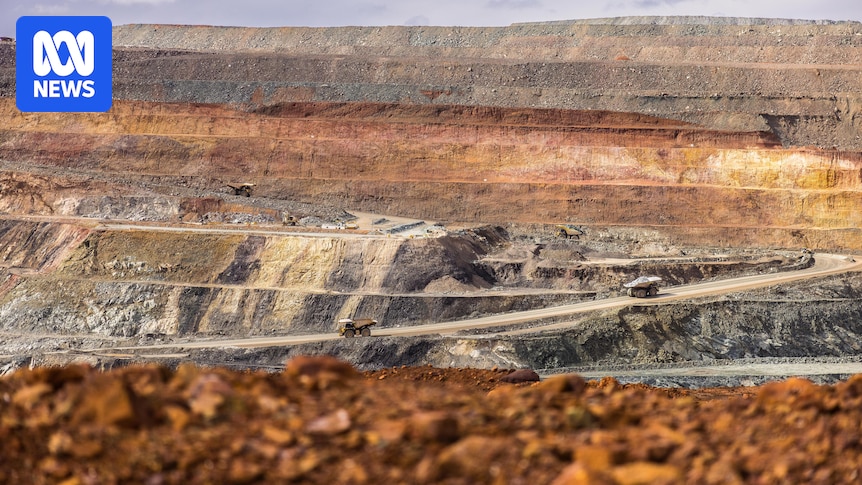
From the public viewing platform overlooking Kalgoorlie’s Super Pit gold mine, Greg Hewitt reflects on a four-decade career as an underground miner. The 80-year-old, who spent 25 years wielding a heavy rock drill known as an air-leg, describes it as a “dying trade” due to its perilous nature and the “calculated risks” involved. Hewitt’s career spanned a period when the Super Pit was considered the richest square mile on Earth, a claim underscored by its massive size—4.5 kilometers long, 1.5 kilometers wide, and 600 meters deep, visible even from space.
Hewitt’s journey began as a teenager in the surveying office at the Lake View and Star mine on Kalgoorlie’s famed Golden Mile. Generations of miners like “Pecker,” as he is affectionately known, have worked this ground since 1893. “In 1965, a fellow miner got killed by a slab of rock and I replaced him,” Hewitt recalls. His career, marked by the physical demands of lugging over 30 kilograms of equipment in stifling underground conditions, reflects the historical evolution of the mining industry.
The Golden Mile’s Storied History
The Golden Mile’s history dates back to August 30, 1893, when prospectors William Brookman and Samuel Pearce registered the Great Boulder lease. This area, known for its rich deposits, became synonymous with gold mining in Australia. In the 1980s, Perth magnate Alan Bond initiated a series of acquisitions to consolidate ownership of the Golden Mile leases, leading to the formation of Kalgoorlie Consolidated Gold Mines (KCGM) by 1989.
Despite setbacks, including Bond’s bankruptcy and subsequent imprisonment, the Super Pit continued to thrive. Since open-pit mining began, the Super Pit has consumed many old workings, which include over 3,500 kilometers of underground tunnels and shafts.
Challenges and Triumphs: The Super Pit’s Recent History
In 2017, KCGM, then under the ownership of Barrick Gold and Newmont, celebrated its 20 millionth ounce of gold. However, the Super Pit faced uncertainty following two significant rockfall incidents in 2018. These events, totaling more than a million tonnes of rock, prompted a shift in ownership to Australian hands for the first time.
By late 2019, Saracen Mineral Holdings and Northern Star Resources each acquired 50% stakes in the Super Pit for over $1.1 billion. Their subsequent $16 billion merger in early 2021 marked a new chapter, with a focus on remediating the east wall, a project that took 55 months and involved mining over 35 million tonnes of material.
Simon Jessop, Northern Star’s COO, remarked, “This mine will be going beyond 2050 … in 50 years’ time, KCGM will still be in operation.”
Future Prospects: Reclaiming the Crown
According to Surbiton Associates, the Super Pit’s best production year was 2011, with 796,000 ounces of gold. Northern Star, now Australia’s largest gold miner, aims to surpass this record. A $1.5 billion upgrade to the Fimiston Mill, set to double processing capacity, is central to this ambition. Post-commissioning, the Super Pit is projected to produce 900,000 ounces annually by the 2028–29 financial year, reclaiming its title as Australia’s top gold producer.
To achieve these unprecedented production rates, Northern Star plans to utilize 144 million tonnes of low-grade ore stockpiles, estimated to contain $10 billion worth of gold at current prices. Additionally, the mine is expanding underground operations, with new portals and exploration efforts uncovering over 1.2 million ounces in the past year alone.
“We’ve identified a number of new lodes we didn’t know about,” said Daniel Howe, Northern Star’s chief geologist.
Looking Ahead: A Legacy of Gold
As the Super Pit gears up for its next phase, the legacy of miners like Greg Hewitt looms large. Despite the physical toll of his career, Hewitt remains proud of his contributions to the Golden Mile. The current surge in gold prices has invigorated both large mining corporations and individual prospectors like Hewitt, who continues to explore the area with a keen eye for gold.
As he stood at the Super Pit lookout, Hewitt displayed a small nugget shaped like a rabbit, symbolizing the enduring allure of gold. “And this is what they’re chasing,” he said with a grin. The Super Pit’s future, much like its past, promises to be a testament to human perseverance and the relentless pursuit of wealth beneath the earth’s surface.





